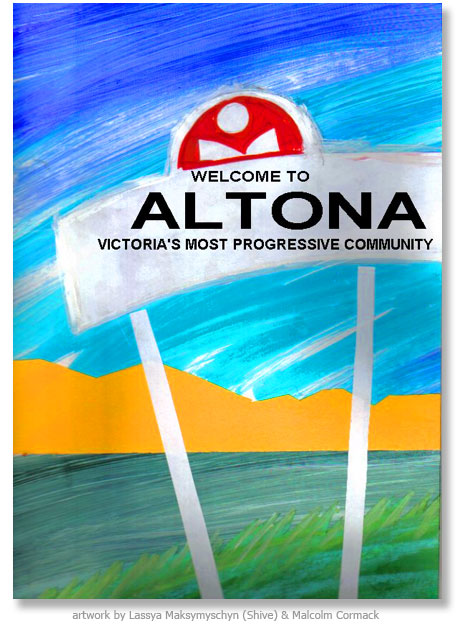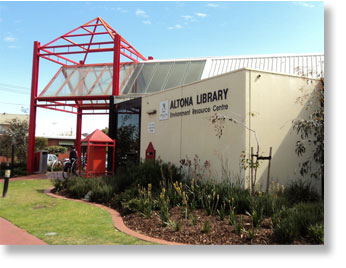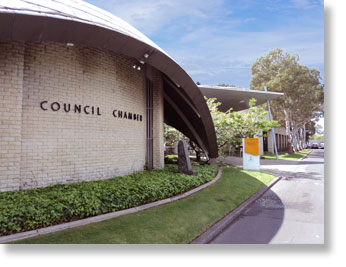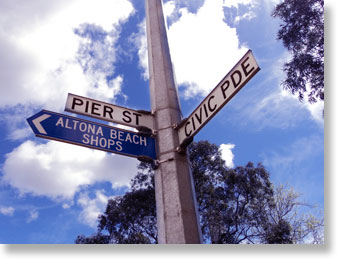


|
|
|||||||||||||||||||||
|
|
 |
|
|||||||||||||||||||
|
|
 |
 |
|||||||||||||||||||
|
|
|||||||||||||||||||||
| Edition 8 |
|
|
|||||||||||||||||||
|
|
|||||||||||||||||||||
|
|
|
|
|
|
|
|
|
|
|
|
|
|
|
|
|
||||||
|
|
|
|
|
|
|
|
|
|
|||||||||||||
|
|
|
|
|
|
|
|
|
|
|
|
|
|
|
|
|
|
|
|
|
|
|
 |
 |
 |
||||||||||||||||||||||||||||||||||||||||||||||
| In 1976 we used the term ‘Gypsy Media’ to point to how we saw the community videomaking story in Melbourne’s western suburbs. It was meant to characterize a movement in community communications relying on different places and different partnerships. PART ONE The community-based videomaking initiative of the 1970’s has produced some valuable writing. Heino Saarelaht, together with Gary Shaw and Robert Manderson, have woven together many strands in setting up this website. Bill Childs wrote of what it was like to be involved at the Canberra end of the experiment. Brian Williams, John Robinson, John Hughes, have illuminated the ‘big picture’ through their personal visions. Here, we put on record, for good or ill, some of how we saw things in the first 18 months or so, and perhaps tellingly, what we barely glimpsed then (or just didn’t see), but what now seems obvious with 20/20 hindsight. MOVE ONE “Heartbreak streets with mud tracks and open drains; narrow main roads with huge potholes; acres of thistles; a huge swamp; an undeveloped foreshore; ramshackle factories.” Looking back years later, this was how Ralph Simmons remembered Altona in 1957, when he took up the post of Shire Engineer for the newly independent Altona. In 1968, reporter Rick Campbell wrote: “For a shire that came into existence only eleven years ago (Altona) has remarkable momentum.” |
Lassya Maksymyschyn (Shive) & Malcolm Cormack 2011 | |||||||||||||||||||||||||||||||||||||||||||||||
 |
 |
|||||||||||||||||||||||||||||||||||||||||||||||
 |
As you entered the suburb and headed south along Millers Road, a large neon sign greeted you: “WELCOME TO ALTONA: VICTORIA’S MOST PROGRESSIVE COMMUNITY.” It was there when Canberra (through its Film and TV Board (FTVB) and Department of Urban and Regional Development (DURD)) decided Altona would be part of its community access videomaking initiative. In 1974 when Turtle Video opened in Pier Street, the Council had just adopted a new slogan - “ALTONA: A GOOD PLACE TO WORK, A GOOD PLACE TO LIVE.” The Altona Star reported that interviews with shoppers in Pier Street showed the Council had got it right. “Of course I like it here”, said Mr. Pendlevski of Blyth Street, “It’s very good.” This was the Altona into which community-based videomaking was to be introduced. This was the Altona to which we brought a mix of hopes, experiences, ignorance, determination and commitment. We also brought with us two assumptions.
We were wrong on both counts………………………………………………………………………… Yes, we were told the community video access initiative was ‘a 12 month pilot project’ to embed in Australian communities some of the practices and successes of videomaking as a community-building resource pioneered by Canada’s ‘Challenge for Change’. The trouble was - ‘Challenge for Change’ had become a myth: it had become a widely believed, inspirational story. When told, it had the power to encourage hope, confront inertia, and turn stuck-in-the-past into open-to-the-future. Elements of FTVB and DURD were believers in the myth. Mesmerized, they bundled together the two distinct elements of Challenge for Change.
“Bring us stories of communities being freed of despair” said Canberra. “Train everyday Australians to be videomakers; lots of them!” The reality was, you couldn’t have both. Let’s restate that. You could perhaps have both, but you couldn’t have them both straight away. Look into the reality behind the myth and it is clear that the time and money to undertake both properly was way beyond the ‘barefoot’ budget of the pilot year. We had to second-guess Canberra. If their expectations were unrealistic, was there an implied priority? This was our analysis.
We were unable to imagine that meeting such a challenge could be soon abandoned. So we assumed that no less than the pilot year’s budget would continue for some years to come (providing the various ‘centres’ were meeting whatever criteria were applied to them). MOVE TWO Yet, inside 12 months, Canberra announced it intended to withdraw general financial support from its community videomaking initiative. ‘Centres’ needed to begin looking for alternative finance straight away. To be blunt, at first we met this with disbelief. Why, when Canberra had gone to all the trouble of setting up a national community access videomaking scheme, would it walk away from it so soon? By the time this had really sunk in, Western Communications’ budget had been cut, with more cuts to come. We were on our own. We had written papers and submissions over which we sweated blood. But we had not yet deliberately built a coalition of allies. Looking back, we can see there were possible partnerships we didn’t explore. If we’d started out with different information and different assumptions we may have acted more quickly and aggressively to broaden our financial and supporter base. PART TWO In December ’75 a discussion paper on the practices and future of the CAV initiative was prepared by DURD. One of the most realistic observations was, before ‘centres’ could request money from local institutions, those ‘centres’ needed to have demonstrated a track record local institutions knew about and/or were part of. It’s obvious now: from Day One, we needed a clear-eyed view that Canberra’s input was limited; other sources of finance and support would need to be planned for – almost straight away. Projects that had the capacity to bring a local financial source behind community video needed to be explored in the first 6/9 months, and put into effect soon after. Would this have been an unnecessary extra burden? We can’t speak for other parts of the community video enterprise, but in our case, we don’t think so. It wouldn’t have demanded more decisions but different decisions. MOVE THREE We set out to foster a grassroots body of videomakers, to be the core of community television when it came. If we had adopted at the outset a priority to build a base of support in ‘established’ circles, where would we have started? That’s simple:
A major partnership with the local Altona Council is one we didn’t undertake – a situation we want to explore here. Sydney community activist and videomaker Tom Zubrycki wrote about the challenges facing community videomakers when pursuing projects with local government involvement. His conclusion – working relationships were fraught with difficulties, but not impossible. Local Councils are a potential source for community video. Ensuring a degree of acceptance for the medium therefore becomes crucial …..Local government is commonly one of the most conservative institutions in the community and will not tolerate being ‘stirred up’. In my mind a delicate compromise must be reached. Although you may perceive your true role to be that of an advocate for (local) resident groups, your public image must remain impartial. As noted elsewhere, we were asked to look into the impact of the petrochemical industry on the Altona environment. We observed that the Council had a solid history of representing its citizens against threats of real or possible pollution. It had been prepared to take on the state government. It had taken polluters to court. Recent successes against threats to the environment were greatly appreciated. The days of damaged gardens and black stains on Altona laundry seemed to be over. So, at the time, a piece of investigative video journalism didn’t seem necessary. But, if something did happen to change things, we were ready. In hindsight we can see we adopted a ‘crisis’ role for community video. We didn’t exhaustively explore setting up a project that operated during the ‘good times’. We didn’t realize the value to the Council of what we could have offered. Using the model of Western Communications’ annual report to the community, we could have offered the possibility of a regular environment report to Altona residents. A working group of the Altona Council, the Altona Pollution Abatement Committee and Western Communications could have produced an updated ‘Environment Watch’ e.g. twice a year; broadening the base of the Council’s community communications through Westcom’s Cassette Network, schools and libraries. Rare for the time, Altona allotted specific portfolios to its Councillors. The councilor who had the ‘pollution’ portfolio had welcomed community video to the area and (we believe) would have supported the co-production. The ‘pollution’ portfolio had recently been re-named the ‘environment protection’ portfolio. Again, with hindsight, this expansion of the work into water quality and automobile pollution was a time of change and opportunity. MOVE FOUR There were other reasons why the Altona Council might have responded positively to a working relationship with Western Communications. Until the late 1960’s Altona had been a ‘Labour’ council, its councilors endorsed by the Australian Labour Party. Since then, it had consisted of members who valued a non-political party ‘progressive’ image for the area and it’s Council. Council took this image seriously. Public Relations was one of its portfolios. The word ‘progressive’ appeared on the giant neon sign that, until 1973, welcomed people entering the suburb. It was a word used to describe the area in a Melbourne Age supplement in 1976. The one-time Nellie Street was now proudly renamed Civic Parade. Locals liked to contrast ‘new’ Altona with ‘old’ Williamstown. Council had several times upgraded its newsletter to ratepayers and residents. It would have been more open than we realized, to embrace community video as a new-and-here-to-stay element it could recognize, within its embryo ‘information’ policy. Council had adopted a practice of holding regular consultations with industry, migrants, churches, and sporting bodies. We could have explored how to integrate these with a newsmagazine arm alongside Channel 4 News. An umbrella title might have been Meeting Place or Common Ground. These options seem obvious today. It also seems likely to have succeeded more than we imagined in the early years of the community video initiative. (And what we didn’t pick up at the time – they had ‘form’. In 1966 the Council had backed the formation of the Altona Film Society). If a number of these possible ways of co-operation had come off, by 1976/77 Altona Council would have had extensive experience of the value of the community video initiative to the wider community and to some areas of Council interest and responsibility. Western Communications could then have looked to the council for support in a number of ways.
Faced with the challenge to set up a grass-roots community videomaking capacity in Altona and the west, we gave this most of our attention. Turtle Video/Western Communications built a number of valuable partnerships. The base of these partnerships could have been wider, from the start. We have no reservations about what we did do. Looking back from the 21st century we have some regrets about what didn’t happen. Writing of Melbourne’s ‘Video Exchange’, John Hughes reminds his readers to ‘Beware of Greeks bearing Gifts’. From the early years of Turtle/Western Communications, our cold-eyed advice would be: ‘Beware of having all your eggs in one basket’ and ‘you can’t have too many friends’. MOVE FIVE Finally a word on broadcasting community video. From the early years of Turtle/Westcom we believed it was just around the corner, inevitable. The goal of broadcasting using an Outside Broadcast/Transmission Van was Western Communications’ preference. The necessary pre-conditions – technical, economical, legislative, political – never quite fell into place. Peter Duffy’s reports from Western Communications in 1979/1980 are a moving mix of hope and heartbreak. (see week 6 Paperfile) A FLIGHT OF THE IMAGINATION “Some days”, said the Turtle, “I walk slowly across to the beach and bask in the sun – and I wonder at the story of community videomaking in Australia and of western Melbourne in particular.” “In 2011” it said, “Altona has a Crofts Court and a Fell Park. These names pay deserved tribute to Altona Council leaders of the 1970’s – Les Crofts and Syd Fell.” “But”, it continued, “No matter how hard you search, you won’t find a Footscray Video Freeway, a Turtle Terrace or a Westcom Way!”
|
|||||||||||||||||||||||||||||||||||||||||||||||
 |
 |
|||||||||||||||||||||||||||||||||||||||||||||||
| The Altona Library 2011 - part of the “access” and “cassette” network in 1974 | ||||||||||||||||||||||||||||||||||||||||||||||||
 |
||||||||||||||||||||||||||||||||||||||||||||||||
 |
||||||||||||||||||||||||||||||||||||||||||||||||
| Altona Council Chambers 2011 | ||||||||||||||||||||||||||||||||||||||||||||||||
 |
||||||||||||||||||||||||||||||||||||||||||||||||
 |
||||||||||||||||||||||||||||||||||||||||||||||||
| Part of the Altona petrochemical industry today - 2011 | ||||||||||||||||||||||||||||||||||||||||||||||||
 |
||||||||||||||||||||||||||||||||||||||||||||||||
 |
||||||||||||||||||||||||||||||||||||||||||||||||
 |
||||||||||||||||||||||||||||||||||||||||||||||||
 |
||||||||||||||||||||||||||||||||||||||||||||||||
 |
||||||||||||||||||||||||||||||||||||||||||||||||
 |
 |
 |
* ‘The Process’ – see week 6 Feature: Distribution (A) Video Viewing and the ‘Challenge for Change’ model. References
|
|||||||||||||||||||||||||||||||||||||||||||||
 |
||||||||||||||||||||||||||||||||||||||||||||||||
 |
||||||||||||||||||||||||||||||||||||||||||||||||
 |
||||||||||||||||||||||||||||||||||||||||||||||||
 |
||||||||||||||||||||||||||||||||||||||||||||||||
 |
||||||||||||||||||||||||||||||||||||||||||||||||
 |
||||||||||||||||||||||||||||||||||||||||||||||||
 |
||||||||||||||||||||||||||||||||||||||||||||||||
|
|
|||||||||||||||
|
|
|
|
|
|
|
|
|
|
|
|
|
|
|||
|
|
|||||||||||||||
|
|
|
Reuniting friends and members of Community Access Video Centres from Melbournes Western Suburbs, Victoria, Australia A non profit project © REUNION INTERNATIONAL PICTURES 2010 - 2011 |
|
|
|||||||||||
|
|
|||||||||||||||
|
|
|
|
|
|
|
|
|
|
|
|
|
|
|
|
|